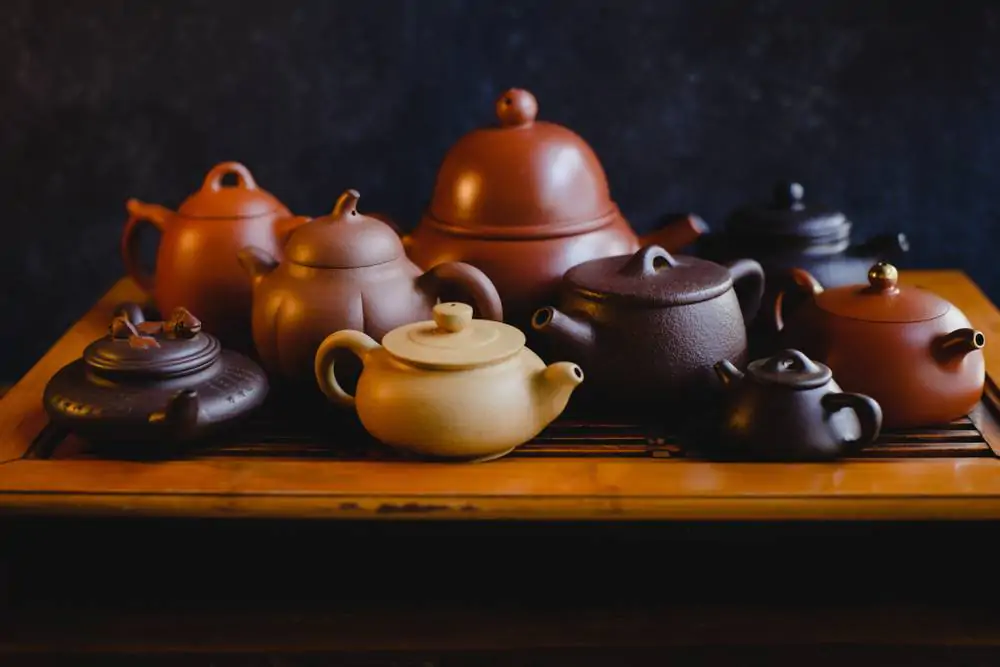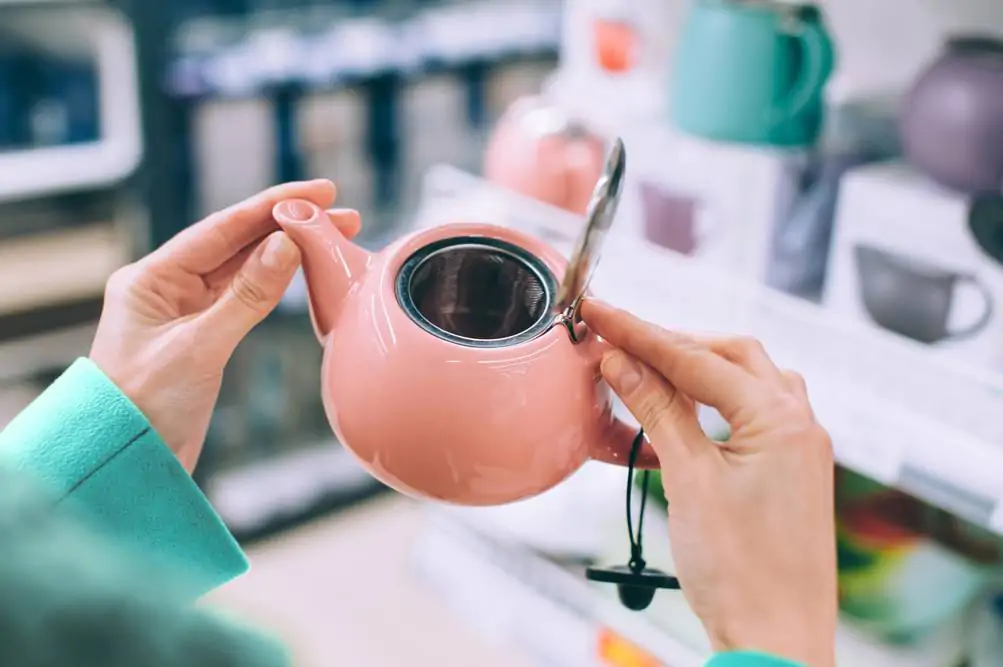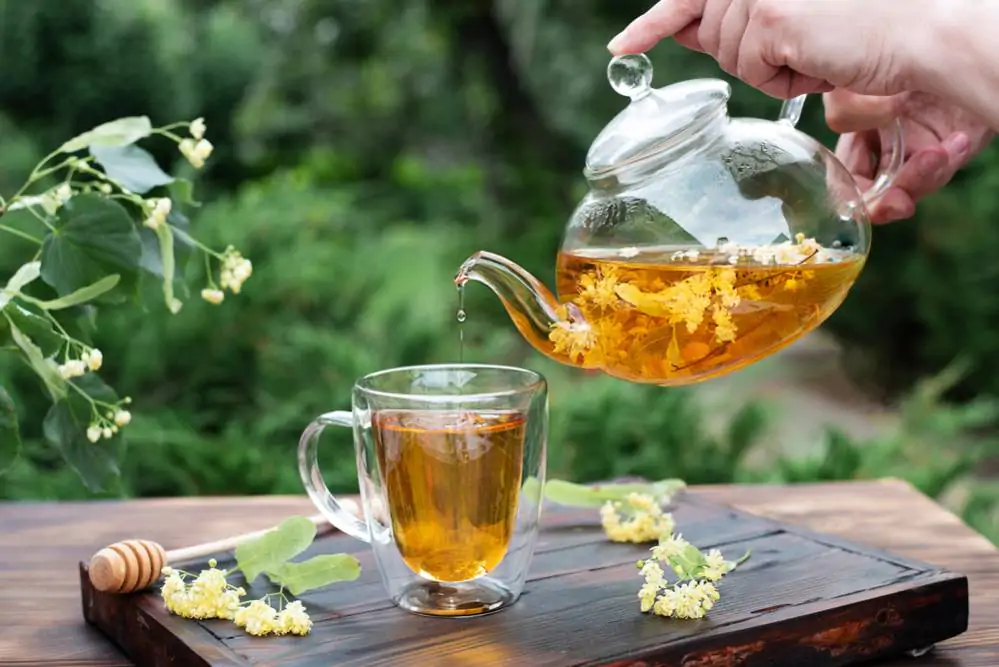If you can’t start your day without a cup of tea, then you need the perfect teapot. Our teapot size guide will help you choose the perfect one for your needs.

The platitude “size doesn’t matter” definitely doesn’t apply to teapots, which is why you need a good teapot size guide. Tea is the second most consumed beverage in the world, after water. If it’s going to be a part of your daily life, you should brew a perfect cuppa every time.
The size of your teapot plays a role in many factors, including tea concentration, the number of servings, and temperature retention, so it’s important to get it right. That’s why today, we’ll go over everything you need to know about teapot sizes. From materials to sizes and brewing considerations, this article will cover everything you need to make an informed decision.
While you’re here, check out our article on the best teapots for recommendations. Let’s dive in.
Understanding Teapot Sizes
When it comes to teapot sizes, there isn’t a set standard teaware companies must stick to. In most cases, the capacity of a teapot is expressed in cups, e.g. 2-cup teapot. However, the problem lies in the fact that there’s no standard size for a teacup.
So while certain brands use a 6-ounce cup as a measurement, others consider an 8-cup to be the standard. That’s why you can see quite a difference in the capacities between certain models – especially when it comes to larger teapots.
It’s worth noting that the bulkiness of a certain model doesn’t necessarily mean it has a huge capacity. That’s why you should pay attention not to the teapot’s dimensions, but the actual capacity of tea it can hold.
How big of a teapot depends on your personal preferences and brewing habits, so you don’t have to strictly follow the measurements indicating the number of cups a model makes.
1-Cup Teapot
If you ask me, there’s nothing cuter than a 1-cup teapot. They’re so tiny, almost like toys, and are the perfect ornament for your dining room. While their adorability is through the roof, their practicality might not be.
That is unless you prefer to sip your tea slowly and in small cups, such as traditional Chinese or Japanese-style teacups. In that case, the tea will sit long enough in the teapot for it to make sense. If you chug your tea like me, you’ll only use this tiny teapot for less than five minutes at a time, which is how long it takes for tea to brew.
Pros
- Visually pleasing
- Encourages slow sipping
Cons
- Only suitable for slow sippers
2-Cup Teapot
A fun date or a gossip session with your best friend? In both cases, it’s good to have a small 2-cup teapot.
What makes a 2-cup teapot great is the fact that it’s not too big for a single person either. In fact, this is the standard size for individual use. Most tea drinkers will probably want a second serving, and you will have one already prepared.
Pros
- Quick to brew
- Suitable for 1-2 people
- Efficient
Cons
- Limited capacity
3- and 4-cup Teapots
If your partner loves tea as much as you do, then it’s worth investing in a 3- or 4-cup teapot. There’s enough tea for a second serving, for both of you.
The reason why these two teapot sizes are grouped is that they can be similar in capacity. Let’s say brand A makes a 4-cup teapot, but considers a standard cup size to be six ounces. In that case, the teapot will have a capacity of 24 ounces.
There’s also a brand B, which uses an 8-cup standard. This means B’s 3-cup teapot has the same capacity of 24 ounces. Regardless, those 24 ounces are ideal for two to three tea drinkers.
Pros
- Suitable for 2-3 people
- Allows second servings
- Decent brewing time
Cons
- Small for families
5- and 6-cup Teapots
These two teapot sizes are considered medium – suitable for smaller households but also individuals who drink a lot of tea.
To put it into perspective, these can make between 30 and 40 ounces of tea, which is ideal for small gatherings with friends or family. Boiling enough water for a 5- or 6-cup teapot can take up to five minutes, which is not too bad. Chances are, you’ll have enough tea left for the second serving.
Pros
- Great for small households
- Suitable for heavy tea-drinking individuals
Cons
- Slightly slower boiling time
7- and 8-cup Teapots
For those entertaining a large crowd, be it a tea party or a family gathering of tea lovers, a 7- or 8-cup teapot can be a worthy investment.
A teapot of this size allows you to pour everyone a hot cup of tea at the same time. They can range anywhere between 42 and 64 ounces, so these large teapots are also quite heavy. This is something to keep in mind when serving tea from them.
It’s also worth noting making tea in a large teapot can easily lead to over-extraction. A teapot of this size can take up to 40 seconds to empty, which means that some leaves may steep longer than expected, leading to a bitter taste.
Pros
- Can make tea for a large group simultaneously
- Suitable for getting second servings
Cons
- Very heavy
- Can cause bitterness
Factors To Consider When Buying A Teapot

You might think choosing a teapot is a simple task. That’s not entirely true, as there are a few factors you should consider before buying a teapot.
Number Of People
This one is probably the most obvious – the number of people drinking tea is one of the main determinants of a suitable teapot size.
If you’re entertaining a group of six people, then you’ll need a large teapot to make enough tea for everyone. A 2-cup teapot won’t be enough, as you’ll have to brew multiple batches of tea. By the time you’ve finished brewing tea for the last person, the first person’s tea has gone cold.
Obviously, the number of people enjoying tea with you won’t always be the same. Sometimes it’s just you, sometimes is the whole family. When choosing a teapot, it’s always best to find the middle ground when it comes to sizes.
In other words, you shouldn’t just go for the biggest option you might need. Larger teapots are prone to over-extraction, but only filling a large teapot halfway is not a good solution either. All the air that fills the remaining volume of the teapot will cause the water to cool down, thus affecting the extraction as well.
Brewing Frequency
As we have established, the larger the teapot, the longer it takes to warm up that amount of water. Are you satisfied with a single cup of tea, or do you pour second servings? This is something to keep in mind when choosing the right teapot size.
If you fall under the first category, then by all means go with the teapot that makes just enough tea for your needs. But if you or your household members like to have another cup soon after, then it’s worth considering getting a larger model to make a bigger batch of tea right away.
Tea Concentration
Another factor that can influence the teapot size selection is the tea-to-water ratio. The golden thumb for making tea is using one teaspoon of leaves for every six ounces of water.
However, this ratio doesn’t take into account that not all tea leaves have the same volume. Herbal infusions like mint or chamomile, as well as teas like the white Pai Mu Tan, have pretty large leaves that take up a lot of space in the teapot.
On the other hand, Gunpowder, rooibos, and blended CTC teas, for instance, have much smaller leaves and particles. While we’re on the subject, check out our recommendations for the best loose-leaf tea brands.
You should take into consideration your personal preferences when making tea. While one teaspoon per six ounces is the “standard,” you can use as many tea leaves as you’d like.
Teapot Size Recommendations
Since there’s no standardized sizing, selecting a teapot can be a confusing task. To make your job easier, let’s see what sizes are recommended for specific situations.
First, we have individual tea drinkers. Those who like to sip their tea or maybe get another serving typically go for either a 1- or a 2-cup teapot. Boiling enough water for these teapots is quick, and it will keep the temperature high just enough for you to finish the last drop.
Heavy tea-drinking individuals may opt for a 3- or 4-cup teapot, but these are mainly used by couples. For small families, 5- and 6-cup teapots are a suitable option. They can hold enough tea for every family member and still have some left for anyone who wants more.
If you often make tea parties or your guests simply love how you make Earl Grey, consider getting a 7- or 8-cup teapot. While perfect for large gatherings and entertaining guests, these teapots are very impractical for smaller groups.
Special Considerations To Keep In Mind
When choosing the right teapot, there are a few not-so-obvious considerations to keep in mind. The first one is regarding the different tea types you might be brewing.
So for instance, green tea is brewed at a lower temperature compared to black tea. A teapot that’s a tad too big therefore can work wonderfully for green tea, as it allows the heat to escape quickly. The same goes for teas made from tips (the top two leaves and buds of a tea plant), like the Darjeeling white tea.
Black and oolong tea, on the other hand, prefer having less air inside the teapot. This creates a concentrating effect, making your tea strong and hot.
Another factor that can influence your teapot size is the material. Teapots can be made of iron, stainless steel, glass, clay, or porcelain. Each of the materials has its pros and cons, all of which can affect the choice of teapot size.
An iron teapot, for instance, is great at heat retention but is prone to oxidation. This can cause the tea to get a bitter or metallic flavor. This is mainly noticeable with larger models, which makes iron a better choice for smaller teapots.
When it comes to clay, this material holds heat very well, which makes it an excellent choice for larger teapots. The same goes for porcelain, which distributes heat evenly, thus preventing over-extraction or under-extraction.
Then, we have stainless steel teapots. This material doesn’t impair the taste of the tea over time and retains heat well, which makes it a suitable option for any teapot size.
Finally, we have glass teapots. They’re beautiful, but not great at keeping the tea hot for long. That’s why they’re best for pots small enough to brew a single serving.
Practical Tips For Choosing The Right Size

Labels are everything when buying a teapot. Visually assessing the capacity of a teapot is not an easy task, especially for the untrained eye. Here are a few things to keep in mind when trying to determine the capacity of a specific teapot.
There’s something called functional capacity, and it indicates the actual amount of tea that can come out of the teapot. Look inside the teapot and note where the filter screen, which prevents the leaves from exiting the teapot, is. This is the limit for how much tea you can brew.
It’s fine if the opening of the spout is slightly submerged in water, but going over that will cause spills. You need to take into consideration the amount of tea leaves you plan on adding to the pot. The chamber needs to be large enough to allow the leaves to move around and expand during the steeping process.
Finally, you should also consider your tea-drinking habits and lifestyle when choosing a teapot. So if you enjoy your tea the traditional Chinese way, it only makes sense for you to get a matching teapot that’s small in size, and suitable for small cups you drink your tea from.
Alternatively, if you enjoy your tea from an 8-ounce “worker of the month” mug, then it only makes sense for your teapot to match your drinking energy, and is just as bulky as the mug of your choice.
